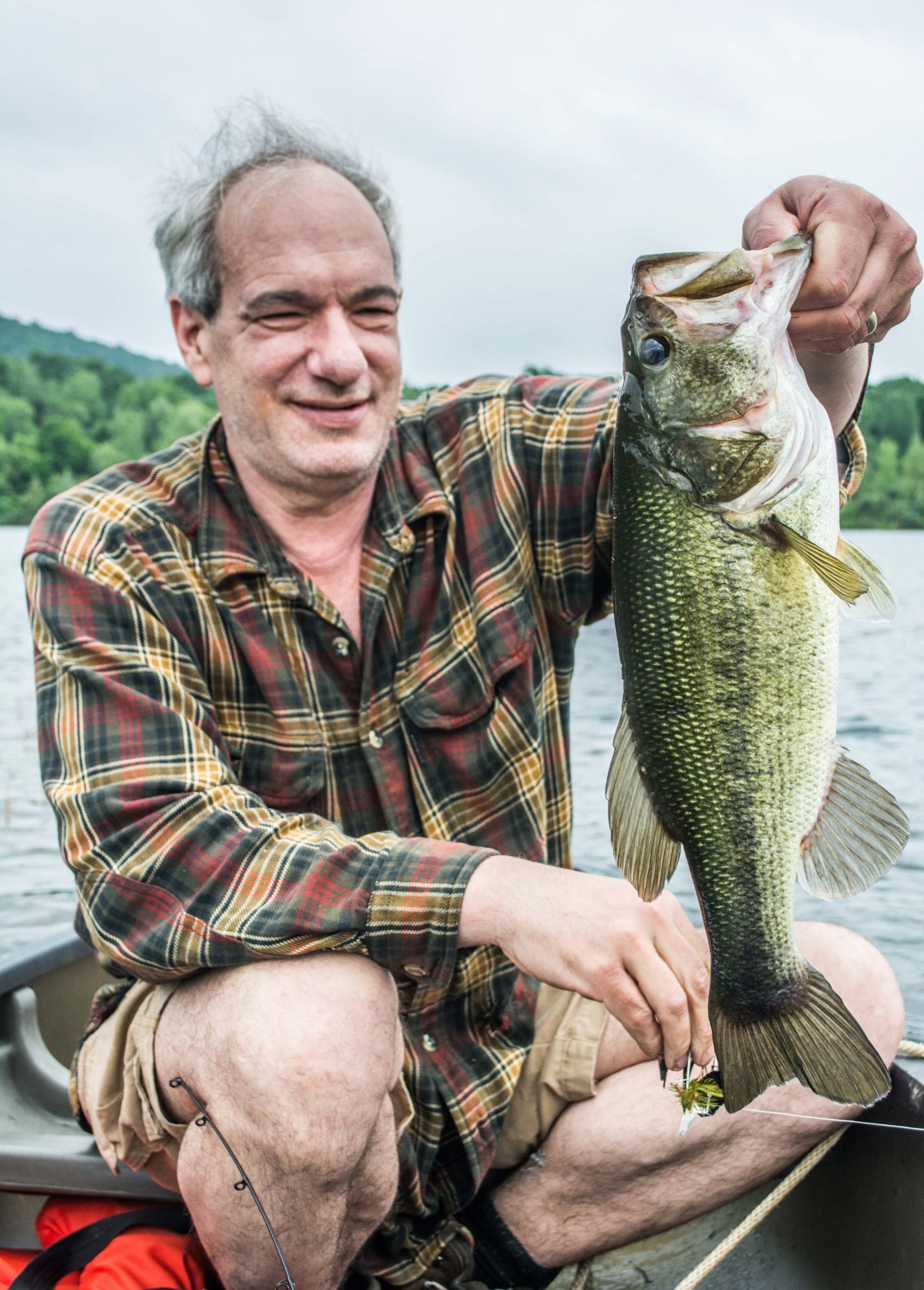
A tactical approach to targeting largemouth in the deep.
When I fish for largemouth deeper than 20 or 25 feet, I’ll weight my worm. But when I’m fishing 15, 18, maybe 20 feet down, an unweighted and slow-sinking traditional worm is usually my preference. Sometimes it’s a Senko, which sinks twice as fast.
I like the patient feeling of suspense as a slow-sinking worm falls, and yet a quarter-ounce bullet weight makes me feel I can hit a target. That target doesn’t have to be anything more than bottom – I wouldn’t know if I were making contact without it.
In my experience, when I’m fishing really deep, it’s always clear water, which means there’s a good argument for the Carolina Rig’s freeing the worm from the lead, but invariably, I go with a straight Texas Rig anyway, though I don’t peg the bullet weight with a toothpick. If it slides down the line on descent, the worm will catch up during the retrieve, and in my experience, bass aren’t picky about a piece of lead functioning as a head. When they suck the worm in, the lead will probably stay there on the bottom, anyhow, but set the hook immediately when you feel a pronounced pull.
Some of the lakes and reservoirs I fish have weeds 25 feet deep, and fishing the edges and in the midst carefully and persistently can result in especially big summer bass. You might try rigging a 10- or 12-inch Mann’s Jelly Worm with the point of a 5/0 inset hook buried in that soft plastic, but 8 inches should do. Years ago, I bought a bag full of Jelly Worms for an 18-acre pond. I regularly caught largemouths 16 to 19-1/2 inches long from brush along shoreline drop-offs. I still have no doubt bigger bass exist, but I never tried a Jelly Worm. A big worm like that makes plenty of sense if you want to target only large bass; but not only do 8-inchers catch a lot of bass, they have a subtler feel. I’m fully aware I could go with 4 inches to achieve subtler feel yet. During my teens I casted nothing but 4-inchers. Nowadays 8 inches feels just slinky enough.
So usually, when I’m sinking a worm – it’s an 8-incher. I haven’t always sought out deep weeds, though. Sometimes – even for largemouth – what I want is rock. I believe bass avoid muddy bottom if they can. Rock and gravel may be an anomaly, and when it is, it qualifies as an irregular feature of a water body’s bottom. Structure, in other words. Bass congregate on that.
I like how a bullet weight knocks rock. I always use 20-pound-test braid, which gives me much better feel than fluorocarbon or mono. For leader I’ll use 2 or 3 feet of 20-pound-test fluorocarbon tied directly to the braid by a Uni-to-Uni splice. A package of Power Pro includes directions on how to tie the splice. Or you can look for directions online. It’s important to remember that the same knots that work for fluorocarbon or mono don’t necessarily work for braid. Many bass anglers use only baitcasting gear when fishing a Texas Rig, but I’m comfortable using my 7-foot, medium-heavy Lew’s Speed Stick spinning rod.
Clear water means that during July and August, especially the biggest bass may seek to avoid the light penetrating it. They’ll get into the thick of weeds where you may need an ounce of tungsten to penetrate the stuff, but on the other hand, some may situate even deeper than 25 or 30 feet. There’s a sense of darkness especially about August. By then, summer has descended into the deepest of dog days, and during those, bass fishing can be tough. There’s a feel of thickness in the air that translates to darkness, just as the haze overhead lets less sunlight through. I might put a worm 40 feet down, because I can find bass there that just want the cover of darkness, even if the bottom isn’t especially hard.
The water’s cooler, too. Active bass will pounce on a variety of jig and plastics, but I’ve focused on the Texas Rig only because I’m stubborn. I’ve even had largemouths smack crankbaits trolled 15 feet down over 25 feet of water during summer, but that’s another story.



